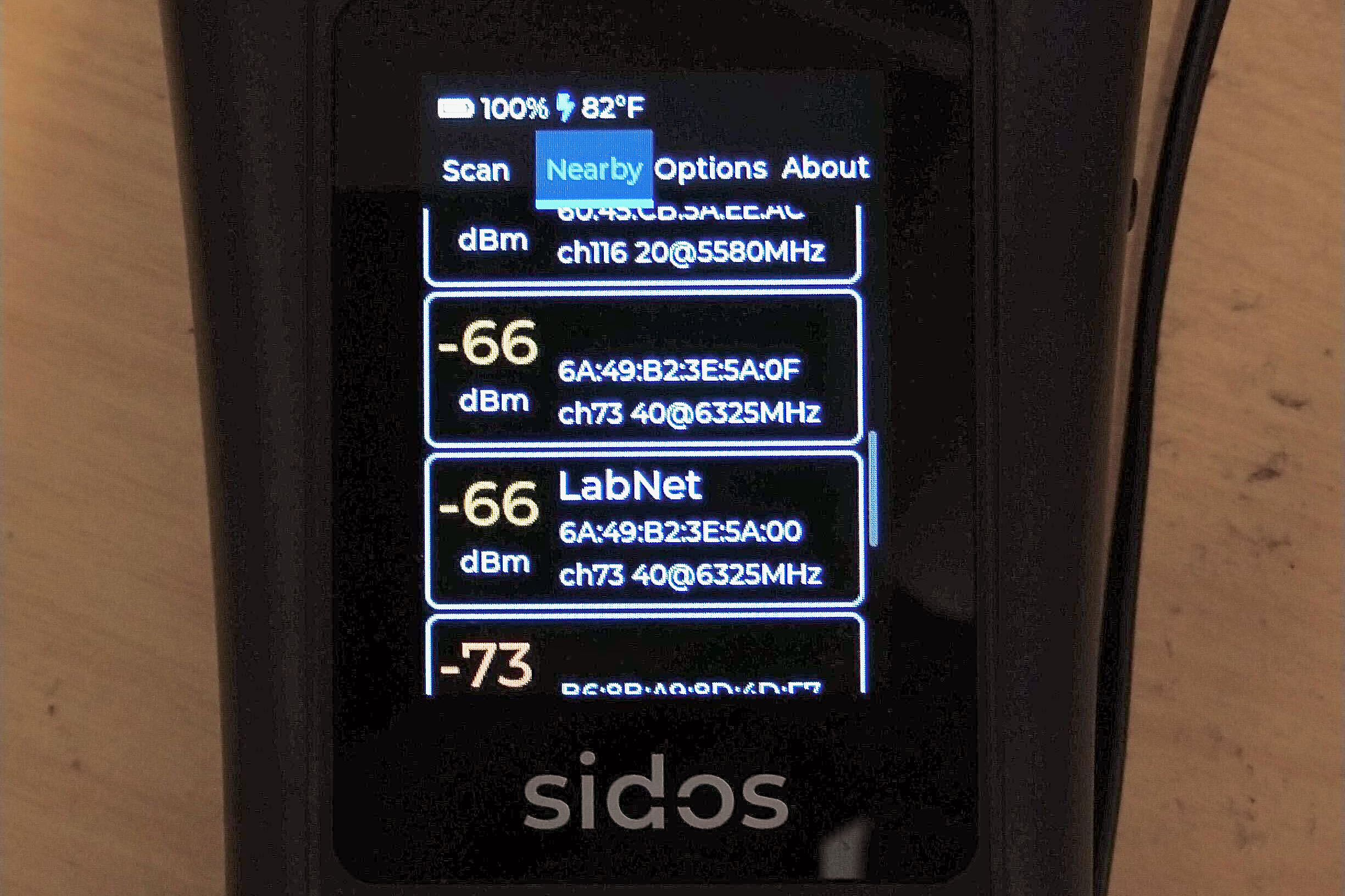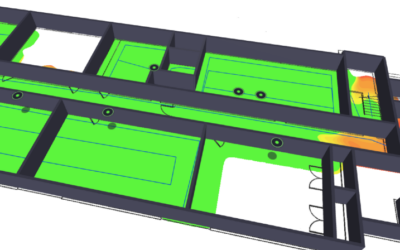Introduction
Wi-Fi 6E, an extension of the Wi-Fi 6 standard, introduces the 6 GHz band, significantly increasing available spectrum and reducing interference. However, this new frequency band presents challenges and opportunities for network discovery and design. This blog will delve into the technical aspects of Preferred Scanning Channels (PSC) and non-PSC channels, the mechanisms of client channel discovery, the importance of PSC channels, the strategic use of non-PSC channels, and relevant international considerations.
Network Discovery
Traditional Discovery Methods
Clients rely on active and passive scanning methods to discover available Wi-Fi networks operating in the 2.4 GHz and 5 GHz bands.
Active Scanning: Clients send probe requests on select channels and wait for probe responses from access points (APs). This method becomes less efficient in the 6 GHz band due to the increased number of channels.
Passive Scanning: Clients listen for beacons periodically transmitted by APs. While this method is less power-intensive, it requires clients to dwell on each channel long enough to receive a beacon, which is time-consuming in the 6 GHz band.
In-Band and Out-of-Band Discovery in 6 GHz
Wi-Fi 6E introduces both in-band and out-of-band discovery mechanisms to improve the efficiency of network discovery in the 6 GHz band.
In-Band Discovery
In-band discovery in Wi-Fi 6E enhances the efficiency of network discovery within the 6 GHz band by introducing specific mechanisms designed to minimize scanning overhead and power consumption. These mechanisms include Fast Initial Link Setup (FILS), Unsolicited Probe Response (UPR), and Preferred Scanning Channels (PSC). Each method plays an important role in streamlining the discovery process for client devices.
Fast Initial Link Setup (FILS):
FILS frames are broadcast by access points (APs) every 20 milliseconds, i.e. about five times more frequently than beacons. These frames are designed to expedite the discovery process by providing essential network information in a compact format. FILS frames contain details such as the Service Set Identifier (SSID), Basic Service Set Identifier (BSSID), and the primary channel of the AP.
- Reduced Airtime Consumption: FILS frames are significantly smaller than traditional beacon frames. This compact size reduces airtime consumption, allowing for more efficient use of the wireless spectrum. By broadcasting critical information more frequently and in a smaller format, FILS frames help clients quickly identify available networks.
- Improved Efficiency: Because FILS frames are broadcast much more frequently, clients can quickly latch onto available networks without needing to wait for the longer intervals associated with traditional beacons. This rapid identification process is especially beneficial in environments with high mobility or dense AP deployments where roaming events take place more often.
Unsolicited Probe Response (UPR):
UPR involves APs periodically sending unsolicited probe response frames. These frames contain all the necessary information for clients to associate with the network, such as SSID, BSSID, and supported capabilities.
- Passive Information Reception: Unlike active scanning, where clients send probe requests and wait for responses, UPR allows clients to receive information passively.
- Frequent Updates: Similar to FILS, UPR frames are sent at regular intervals, typically every 20 milliseconds. This ensures that clients have up-to-date information about available networks without the need for frequent active scanning.
Preferred Scanning Channels (PSC):
PSC channels are a subset of channels in the 6 GHz band. Instead of requiring clients to probe all 59 available channels, PSC channels limit the scanning to 15 predefined channels (5, 21, 37, 53, 69, 85, 101, 117, 133, 149, 165, 181, 197, 213, and 229).
- Focused Scanning: By concentrating the scanning efforts on a limited number of channels, PSC significantly reduces the time and power required for network discovery. Clients can quickly identify APs operating on these channels without the exhaustive process of probing every possible channel.
- Efficient Channel Utilization: PSC channels are strategically spaced every 80 MHz to ensure the GHz band is covered equally by these channels. This spacing allows for efficient use of the available spectrum and ensures that clients can reliably discover networks even in high-density environments.
- Standardization: PSC channels provide a standardized approach to scanning, simplifying network configuration, and troubleshooting for administrators. This standardization ensures consistency in network discovery across different devices and deployments.
Benefits of In-Band Discovery Mechanisms:
- Reduced Power Consumption: By minimizing the need for active scanning across all channels, in-band discovery mechanisms like FILS, UPR, and PSC significantly reduce the power consumption of client devices. This is particularly beneficial for battery-operated devices, extending their operational life.
- Faster Network Discovery: These mechanisms enable clients to quickly and efficiently discover available networks, reducing the time to establish a connection. This rapid discovery process is crucial in dynamic environments where devices frequently connect to different networks.
- Enhanced Network Performance: In-band discovery mechanisms help maintain overall network performance by optimizing the scanning and discovery processes. Reduced airtime consumption and efficient spectrum use improve network reliability and user experience.
In-band discovery is essential for 6 GHz Wi-Fi because it dramatically cuts down the time and energy devices need to find networks. This is crucial since the 6 GHz band has so many more channels than the older 2.4 GHz and 5 GHz bands.
Out-of-Band Discovery
Out-of-band discovery leverages information from the 2.4 GHz and 5 GHz bands to discover 6 GHz networks. This is achieved through the Reduced Neighbor Report (RNR) mechanism, where APs include information about neighboring 6 GHz networks in their beacon frames on the 2.4 GHz and 5 GHz bands. Clients can use this information to target specific 6 GHz channels, thereby minimizing the need for exhaustive scanning.
The RNR mechanism provides clients with a more efficient way to discover 6 GHz networks without the need to actively probe all 59 channels. Here’s how it works in detail:
- Inclusion of RNR in Beacons: Access points operating in the 2.4 GHz and 5 GHz bands include an RNR Information Element (IE) in their beacon frames. This RNR IE contains details about the 6 GHz networks, such as the SSID, BSSID, and channel information. By embedding this information in the beacons of legacy bands, APs help clients discover 6 GHz networks more efficiently.
- Client Processing of RNR: When a client device scans the 2.4 GHz or 5 GHz bands, it processes the beacons and extracts the RNR information. This allows the client to build a map of available 6 GHz networks without directly scanning the 6 GHz band. The RNR provides the necessary details for the client to know which 6 GHz channels to probe specifically, significantly reducing the scanning time and power consumption.
- Directed Probe Requests: Armed with the information from the RNR, the client can send directed probe requests to the specific 6 GHz channels identified in the RNR. This targeted approach is much more efficient than blind scanning, as it avoids the need to probe every possible 6 GHz channel. Directed probing ensures that the client only scans channels where it knows there is a potential AP, improving the speed and efficiency of the discovery process.
- Benefits of RNR: The use of RNR in out-of-band discovery offers several advantages:
- By leveraging out-of-band discovery through the RNR mechanism, Wi-Fi 6E networks reduce the time and energy devices spend searching for networks. This translates to longer battery life for your devices and a smoother transition when switching to the faster 6 GHz band.
- Since clients spend less time and effort scanning for networks, battery life is preserved, which is especially beneficial for mobile devices that frequently switch networks.
- Less channel congestion and more efficient discovery mechanisms enhance overall network performance and reliability.
- Compatibility and Implementation: Most modern Wi-Fi 6E devices and APs are designed to support the RNR mechanism. This ensures that clients can effectively utilize out-of-band discovery to improve network efficiency. Implementing RNR in network design helps create a more seamless and robust Wi-Fi 6E environment.
Wi-Fi 6E networks can ensure more reliable and seamless transitions between bands by utilizing out-of-band discovery through the RNR mechanism, enhancing overall network performance and user experience.
Prioritizing Efficiency: Using PSC Channels
Faster Network Discovery: PSC channels significantly reduce scanning time and power consumption for devices searching for Wi-Fi networks. This is crucial in high-density environments with many access points, minimizing congestion on the 6 GHz band.
Improved Battery Life: Less scanning translates to lower battery drain on Wi-Fi 6E devices, especially for those that rely on frequent network switching.
Simplified Network Management: Network administrators can leverage PSC channels for a more standardized approach to network discovery, simplifying network configuration and troubleshooting.
Prioritizing Performance: Using Non-PSC Channels
Increased Capacity: In scenarios with a high volume of connected devices, utilizing non-PSC channels can distribute client load more evenly across the entire 6 GHz spectrum. This can improve overall network performance and reduce congestion.
Minimizing Interference: Strategically using non-PSC channels can help avoid interference from neighboring networks or devices operating on PSC channels. This is particularly important in areas with overlapping Wi-Fi networks, ensuring a more stable and reliable connection.
Specific Use Cases: Certain applications or devices require the use of dedicated channels for optimal performance. For example, in a factory setting, mission-critical industrial control systems might benefit from a non-PSC channel to ensure reliable communication without interference from other network traffic.
Finding the Balance
The ideal approach involves striking a balance between efficient network discovery and achieving optimal performance. Here are some factors to consider:
Network Density: In high-density environments with many devices, prioritize PSC channels for efficient discovery.
Traffic Patterns: If specific areas experience high traffic volume, consider using non-PSC channels to distribute the load.
Interference Levels: Analyze the presence of neighboring networks and strategically leverage non-PSC channels to minimize interference.
Device Requirements: Identify any devices with specific channel requirements and allocate non-PSC channels accordingly.
Spectrum Availability: In regions with limited 6 GHz spectrum, such as Europe, strategically utilize non-PSC channels to maximize spectrum utilization and network capacity.
Ensuring Comprehensive Site Surveys
At Sidos, we understand the importance of comprehensive network surveys, which is why our Wi-Fi measurement device, the Sidos Wave, is designed to scan every channel in the 6 GHz band by default without the user needing to remember to change or adjust any settings. Whether your access points are set to PSC or non-PSC channels, your measurement device must ensure they are detected and analyzed.
Why Scan Every Channel?
- Complete Coverage: By scanning all channels, the Sidos Wave guarantees that no access point goes unnoticed, regardless of its configuration. This is critical for accurate network assessment and optimization.
- Avoiding Blind Spots: Networks configured with non-PSC channels might be missed by devices that only scan PSC channels. The Sidos Wave prevents this by providing a comprehensive scan, ensuring all potential sources of interference and communication are identified.
- Enhanced Network Design: By detecting both PSC and non-PSC channels, network administrators can make informed decisions about channel allocation and interference management, leading to more robust and efficient network designs.
- Future-Proofing: As network configurations and standards evolve, having a measurement device that scans every channel ensures compatibility with current and future network deployments, maintaining the relevance and utility of your network assessment tools.
- Proactive Security Monitoring: Scanning all channels is essential for detecting unauthorized or malicious devices that may be operating on non-PSC channels to avoid detection. This proactive approach to security helps protect your network from potential threats.
Conclusion
Wi-Fi 6E represents a significant advancement in wireless networking, offering extended-spectrum and reduced interference. Understanding the technical aspects of PSC and non-PSC channels and their role in client channel discovery is essential for efficient network design and operation. By strategically utilizing PSC channels for efficient network discovery and considering the use of non-PSC channels for specific scenarios like capacity improvement, more efficient spectrum utilization planning, or minimizing interference, network administrators can optimize their Wi-Fi 6E deployments for performance and compliance with international regulations.
However, it’s important to remember that a comprehensive network assessment requires the ability to scan all channels, including non-PSCs. This ensures the detection of all access points, regardless of their channel configuration, including those intentionally hidden on non-PSC channels. Overlooking non-PSC channels can leave your network vulnerable to rogue access points or other devices that may disrupt your network or compromise security. Routine scanning with tools capable of detecting both PSC and non-PSC channels, such as the Sidos Wave, is crucial for maintaining a secure and optimized Wi-Fi 6E environment.
Key Takeaways
- PSC channels are crucial for reducing the time and power required for network discovery in the 6 GHz band.
- In-band discovery methods like FILS and UPR enhance passive scanning efficiency, while PSC channels streamline active scanning.
- Out-of-band discovery leverages information from the 2.4 GHz and 5 GHz bands to minimize scanning overhead in the 6 GHz band.
- Non-PSC channels can be used strategically for capacity, more efficient spectrum utilization planning, minimizing interference, and specific use cases.
- International regulations must be considered in the design and deployment of Wi-Fi 6E networks to ensure compliance and optimal performance.
- Not all Wi-Fi tools can detect and scan non-PSC channels. Using a Wi-Fi measurement tool like the Sidos Wave ensures that all APs, whether set to PSC or non-PSC channels, are detected, providing a complete and accurate network assessment.
By understanding and implementing these concepts, network administrators can effectively navigate the complexities of Wi-Fi 6E and unlock its full potential for enhanced wireless connectivity.




